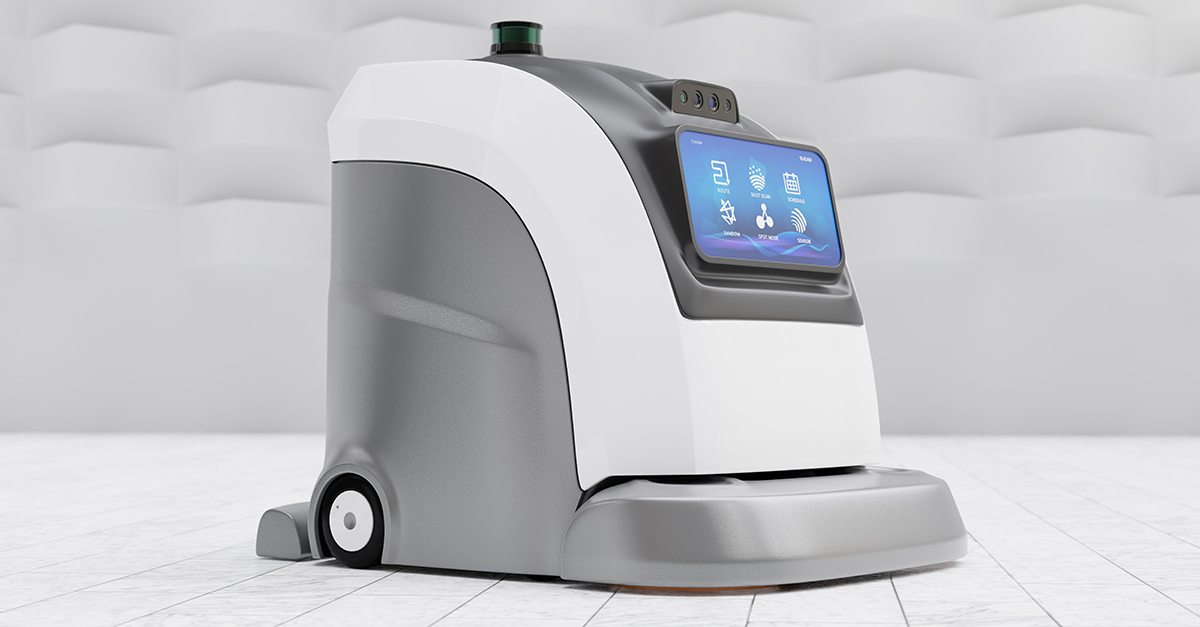As the influence of autonomous cleaning rapidly expands across trade shows, industry publications, and the internet, facility maintenance teams must navigate beyond the noise to make the right decisions regarding autonomous equipment for their business operations.
The growth of autonomous cleaning got a boost during the COVID-19 pandemic with the renewed importance placed on cleaning. At the same time, businesses have struggled with labor shortages, forcing them to look to alternative ways of boosting efficiency, such as robotic cleaning. These labor challenges are impacting just about every industry across the country, from hospitality, healthcare, and education facilities to sports and entertainment venues. Ultimately, facility maintenance teams must identify cost-efficient ways while also maintaining a clean environment.
Facility managers committed to doing their due diligence have been researching all aspects of autonomy to see if it makes sense for their cleaning teams. However, before purchasing robotic cleaners, key considerations go beyond the return on investment. As a facility manager, you should consider the equipment’s features and benefits, the availability of training and support, and how its use will affect management within your organization.
Analyze the features and benefits
When considering an investment in robotic equipment, you must first understand the current cleaning jobs performed within your organization and what you expect to accomplish from moving
to robotics.
Are you looking for a robot with remote deployment? Robotic cleaners linked to an app can work without someone present in the building. You simply set the robot’s schedule online, and it will
deploy and clean based on those directions.
If you want proof of performance, autonomous equipment can also provide that. Robots can share high-level data showing your workers’ hourly productivity, the total square footage cleaned, and more. The specific features for you to consider vary depending on your overall business objectives; some robots can use recycled water to meet sustainability goals, while others operate at different noise levels and with different safety ratings.
An additional benefit of investing in autonomy is that it shows clients and facility inhabitants that you are committed to innovation and maintaining a clean environment.
Seek training and support
Now that you have researched the features and benefits of autonomous equipment, you are ready to engage with suppliers. However, before making a significant purchase, think through what your operation will look like once the robot is on-site.
Depending on the type of robot, the technology can range from straightforward to sophisticated. Determine whether your facility management team will be able to understand and implement
the technology. Ask if the technology provider has someone available to train staff in the facility and how the provider will respond if an issue occurs. For example, if crews have a problem with the robot in the middle of the night, what service agreement is in place to resolve the issue? If a robot is out of service, it’s like a human employee calling in sick; you still need to figure out how to
get the work done.
Another factor to consider is the availability of parts, particularly if the robotics manufacturer is located outside of the U.S. As demand for autonomous equipment increases, more providers
are shipping parts to warehouses in North America and expanding locations of service centers across the U.S. Speed of service is critical to operations, so knowing that your parts are on hand or just a drop ship away could mean the difference between a frustrating experience and a successful deployment.
Consider the effects of autonomy on management
The next consideration before purchasing and implementing a robotic cleaner is its effect on personnel within the organization. Taking the following proactive steps can help ensure your
facility meets its strategic business objectives.
- Clearly communicate the autonomous equipment implementation plan to your team so everyone understands their roles.
- Identify a contingency plan for training and support as well as for technical issues.
- After implementation, identify potential operational pain points.
- If you identify areas that need adjustments, retrain team members to improve the efficiency and productivity of your cleaning operation.
If you properly communicate the value of autonomy to your team members, they will understand that robotic cleaning won’t replace their jobs but instead enhances their work. Ease their concerns about task changes by explaining that the robotic cleaner will allow them to transition to more meaningful, high-touch functions that benefit facility visitors the most. For example, when robotic equipment frees up their time so they can clean the windows at the front entrance, they can positively affect the visitor experience by greeting everyone who enters.
Embrace the transformation
Autonomous cleaning equipment is here to stay. When facility managers plan and execute its implementation properly, robotic cleaning enables organizations to provide healthier, safer, and cleaner environments.
Finding the right trusted partner will help you navigate challenges and evaluate the technology for potential gaps. With the right steps in place, you can take your facility’s cleaning operation to
the next level.



